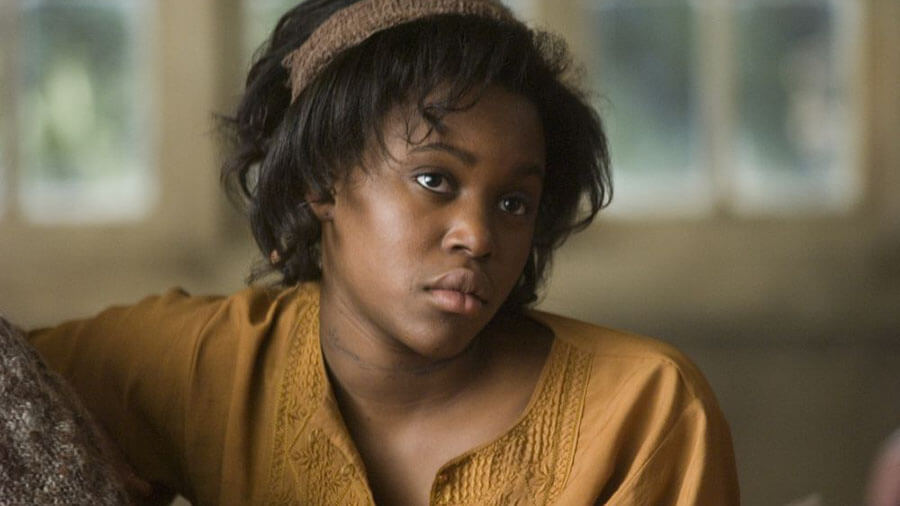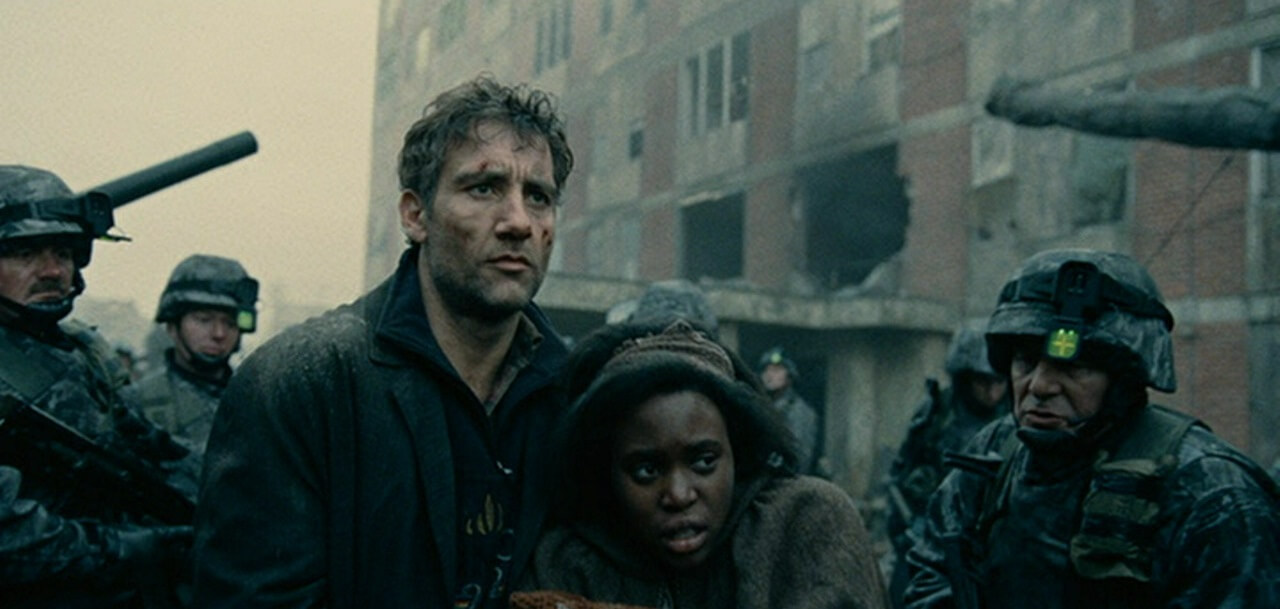CHILDREN OF MEN. Is it still science fiction?

Diego Richardo has just passed away. He was 18 years old. Everyone is looking at the screens of their TVs and computers with horror. The boy’s name is on everyone’s lips. No one hides the grief and helplessness – no one hides the tears. Only Theo doesn’t seem to be shaken by this. When did he lose hope? After the divorce from his wife, before all this began, or only later? Was it when doctors suddenly, with concern, noted that fewer and fewer children were being born, and miscarriages were becoming more frequent? Slowly, “silently,” unexpectedly, and at the most unexpected moment, people lost the most precious gift from God – children.
Preschools and parks are empty, playgrounds filled with a deaf emptiness. Something as obvious as children’s laughter suddenly became inaccessible to human ears. It was then, in this brutally isolated world of adults, in panic, in mindless chaos and helplessness, that chaos was born, and in chaos – the end. Humanity is dying. And Diego’s departure – the youngest person in the world, only sealed it. In this world of the end, Theo tries to function as normally as possible, and he succeeds quite well – he reconciles with reality and doesn’t seek illusory hopes. He doesn’t mind that the government is treating immigrants more brutally, and rebels are becoming bolder in acts of terror. Until he meets his ex-wife – Julian – an active member of the resistance movement. He is asked by her to transport a young immigrant – Kee, outside the boundaries of London. He reluctantly takes on the task. Soon, however, he discovers that Kee is not an ordinary girl – she will soon be the first mother in many years. Theo decides to help her reach the “Human Project” – an organization building a new, better world.

Alfonso Cuarón, with both “Y Tu Mamá También” and the third (and best) part of Harry Potter’s adventures, proved that he has his own unique style, originality, and freshness that young directors often lack. He infused charm and magic into the story of a teenage wizard, fulfilling the dreams of Columbus’s installments; he made the magical world truly come alive. Now, the director moves straight from the adventurous Hogwarts to a bleak future. A future that seems so close, so palpable, that placing it within the boundaries of science fiction must be considered very arbitrary.
Apart from a few futuristic gadgets (not as flashy as in “Minority Report”) and the theme of human infertility, there is nothing here that we wouldn’t hear about every day – armed conflicts, terrorism, population migration – blood, death, hatred. These things have become so obvious, so normal to us that they no longer make an impression on most people. We are engulfed by cold and terrifying indifference. And that’s exactly what you feel from the screen – the raw, dark-toned shots create distance. Theo also plays a similar role – indifferent and resigned, he doesn’t stand out in any way in this sad world. But over time, under the influence of dramatic events, this changes, just like our attitude towards what happens on the screen. Shots become longer, the handheld camera follows the protagonist step by step, giving an extraordinary feeling as if we were participating in Theo and Kee’s journey. Emotions slowly creep into the story, which we didn’t expect at the very beginning.
Clive Owen’s character is excellent here – even though the fate of humanity rests on his shoulders, he cannot be called a “hero” in the full sense of the word – the title is too lofty and heavy. Theo is an average man who, against his will, suddenly finds himself in the midst of incredibly important events. When he has the opportunity to use a weapon, he rejects it without hesitation – he doesn’t try to be a forceful savior of the world. Moreover, Cuarón doesn’t make his path to the goal easy, putting overwhelming obstacles in front of him with their normalcy and lack of cinematic simplifications: crucial events unfold at the least suitable moments, and misfortunes befall the characters suddenly and in an exceptionally brutal way – just like in life. The director is also not afraid of controversial and exceptionally strong moves, which the viewer can practically see at the beginning of the journey when the characters travel through the forest. The realism of the situation and the characters’ behavior is extraordinary and exceptionally rare in films. The subtlety with which the director weaves purely symbolic elements into his film and a few clever references are also captivating.

Like in “Prisoner of Azkaban,” the background is an integral part of the picture. Something is always happening in the background, and the main characters blend into this dramatic landscape. Paradoxically, despite the great importance of their task, they don’t stand out among the crowd of frightened, suffering faces. The detailed set design that authenticates the events and the characters is excellent – just look at Jasper’s house to guess what kind of person he is. The character itself is phenomenal – Michael Caine created an original and funny portrayal, completely different from his earlier achievements. He is no longer a distinguished gentleman but a charming, extremely intelligent, cynical… hippie. Similarly, Pam Ferris undergoes an interesting transformation compared to her previous role. The director previously collaborated with her on the set of “Harry Potter,” where she played the horrible Aunt Marge. Miriam – Kee’s guardian, is the opposite of that character and demonstrates the actress’s versatility. Clare-Hope Ashitey performs well as Kee – a young mother, frightened and completely lost, not fully understanding what is happening around her. Julianne Moore’s role is extraordinary in many ways and breaks a few Hollywood stereotypes.
At the Venice Film Festival, “Children of Men” received the Golden Osella award for cinematography. It was captured by Emmanuel Lubezki (Oscar-nominated for “The New World”), with whom Cuarón had collaborated multiple times before. What he presented in this film is the pinnacle of technical perfection – long, beautiful shots (which must have required great discipline on set, especially with such spectacular scenes), often shot handheld; wonderful color palette and consistency in creating a raw vision of the world captivate from the first moment. When you add excellent editing, special effects that don’t stand out (finally, a film reminds us of the role they play!), you get a true visual feast for a discerning cinephile.

However, the biggest applause goes to Cuarón, who with this film proves how multifacetedly talented he is as a creator. In addition to the incredible technical execution, he accomplishes what Spielberg couldn’t in “War of the Worlds”: he creates an incredibly realistic vision that is a compact and well-thought-out construction; he outlines extraordinary, full-blooded characters, completely unrelated to genre clichés. Most importantly, he doesn’t allow special effects and spectacular explosions to overshadow emotions. And not once does he fall into pathos – even in the most prone to it scene. In the hands of another director, it would be unbearably sentimental – with Cuarón, it is genuinely moving and beautifully sums up the entire film.
It is an extraordinary, beautiful story that stays in memory long after the screening. A tale of how in times of death and hatred, hope suddenly appears. Hope, but not salvation (after all, what can the birth of only one child be?). And a struggle for innocence, which got lost somewhere amid rifle shots and the cries of dying people. And it is finally a story about children – they give meaning to this world, they give us joy and love. They allow us to believe that… everything will be fine.

